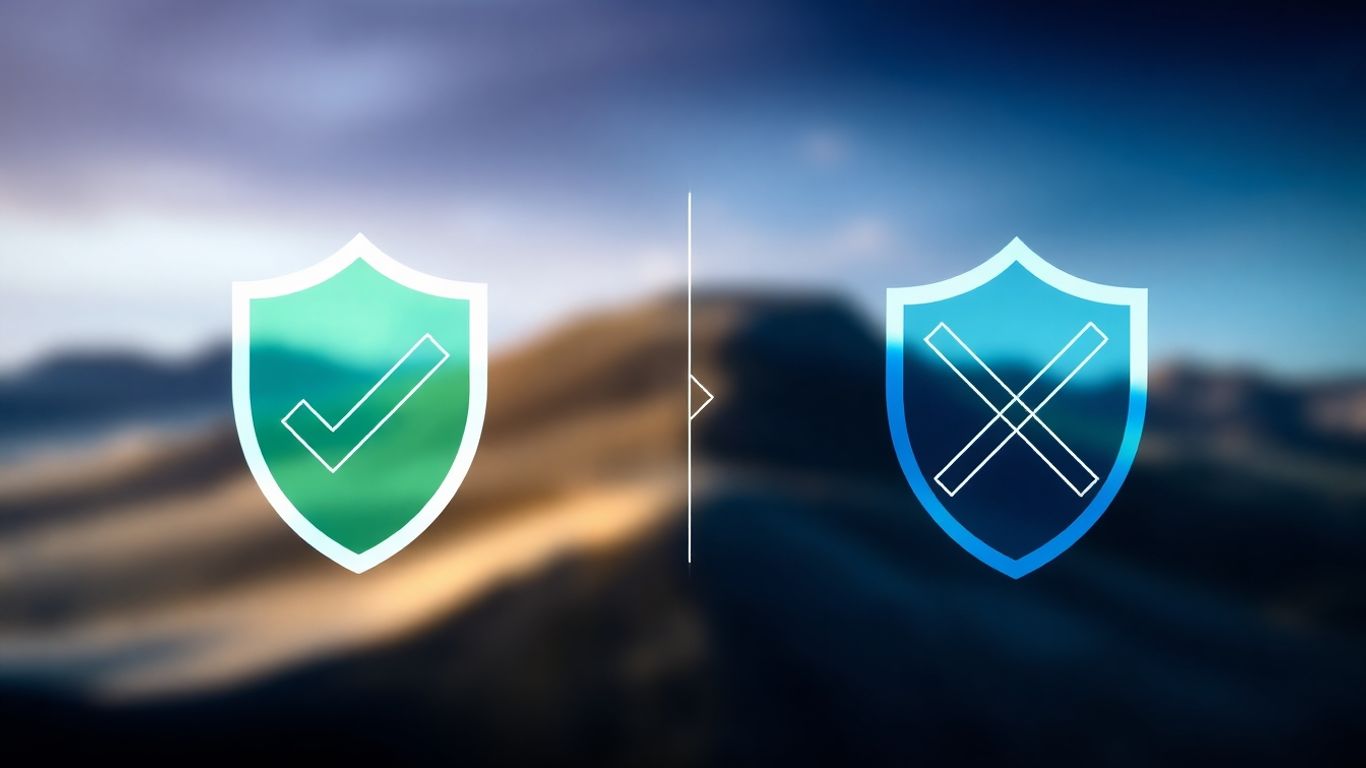[ newsletter ]
Stay ahead of Web3 threats—subscribe to our newsletter for the latest in blockchain security insights and updates.
Thank you! Your submission has been received!
Oops! Something went wrong. Please try again.
Explore Veritas, an AI-powered smart contract auditing system. Get verifiable proof of audit on-chain with immutable badges for enhanced security and transparency.





Smart contracts are the backbone of many blockchain applications, but their complexity can hide dangerous flaws. Traditional ways of checking these contracts are slow and expensive, sometimes missing the really tricky bugs. This is where AI steps in, promising a faster, more thorough way to find problems. The idea of having a clear, undeniable record of these checks, a 'proof of audit on-chain,' is becoming super important for building trust in the decentralized world.
Look, smart contracts are the backbone of so much in crypto these days, right? They handle everything from your DeFi trades to your NFTs. But checking them for security flaws? That's where things get tricky. Traditional methods, like manual code reviews, are basically like trying to find a needle in a haystack. They're super slow, cost a fortune, and honestly, they often miss the really sneaky bugs. Automated tools are a bit faster, but they're not much better at catching the complex issues that can lead to massive losses. It's a real bottleneck for projects trying to get off the ground.
The sheer complexity and the fast-paced nature of blockchain development mean that older auditing techniques just can't keep up.
Here's a quick look at why traditional audits fall short:
This is where Veritas comes in. We're talking about a whole new ballgame for smart contract security. Instead of relying on slow, manual processes, Veritas uses advanced AI to do the heavy lifting. Think of it as having a team of super-smart auditors working around the clock, but way faster and cheaper. Our AI has been trained on a massive amount of code and known exploits, so it's really good at spotting vulnerabilities that humans might miss. This makes the whole auditing process much more efficient and accessible for everyone involved in the blockchain space.
We're making audits about 10 times faster and up to 90% cheaper than what you'd typically find. This isn't just about saving money; it's about making robust security a standard, not a luxury. We want to help projects launch with confidence, knowing their smart contracts are as secure as possible. You can even submit existing credentials like audit logs to streamline the process, especially for DeFi projects [dcac].
Veritas isn't just a single tool; it's a whole system designed to cover all your bases. We've packed it with features that tackle the weaknesses of older methods head-on.
Think about it: traditional audits are like getting a handwritten note saying a building is safe. It's okay, but how do you really know it's legit? Verifiable credentials change that game. They're digital, cryptographically signed attestations about something – in our case, a smart contract's security status. Instead of just a report, you get a digital badge that can be proven to be real and issued by a trusted source. This means anyone can check the validity of the audit without having to trust a single company's word. It's about moving from trust-based systems to verifiable ones. This is a big deal for making sure audits aren't just paper tigers.
So, we have these verifiable credentials, but where do they live? Putting them on a public blockchain, like Ethereum, is where the magic really happens. Imagine stamping that audit badge directly onto the blockchain. It becomes a permanent, unchangeable record. This means no one can go back and alter the audit results later, which is a huge problem with traditional methods. It’s like engraving the results in stone instead of writing them in pencil. This immutability is key to building real trust. Plus, it makes the information accessible to anyone who needs to check it, without needing special access or permissions. This transparency is a game-changer for the whole ecosystem. We're talking about making audit results as reliable as the blockchain itself, which is a pretty high bar.
When we anchor audit proofs on-chain, we're basically creating a public ledger of security. Every audit, every verification, gets recorded. This makes the whole process incredibly transparent. You can see which contracts have been audited, by whom, and when. It’s all there for the world to see. And because blockchains are designed to be tamper-proof, these records are immutable. Once an audit result is on the chain, it stays there, exactly as it was recorded. This prevents any funny business, like backdating reports or changing findings after the fact. It creates a level playing field where projects can demonstrate their commitment to security, and users can independently verify those claims. This level of transparency and immutability is what builds lasting trust in the decentralized world. It's about making security a verifiable fact, not just a marketing claim. The ability to anchor proofs on public blockchains is a significant step towards more secure systems.
Here's a quick look at what makes this approach so strong:
The core idea is to move away from relying solely on the reputation of auditors or the claims of projects. Instead, we use the inherent security properties of blockchain technology to create a verifiable and trustworthy record of security assessments. This makes the entire process more robust and reliable for everyone involved.
So, how does Veritas actually pull off these super-fast, super-accurate smart contract audits? It's not magic, though it might seem like it sometimes. The system is built on some pretty advanced tech, really pushing the boundaries of what AI can do in the security space.
At its core, Veritas uses sophisticated AI models, specifically large language models (LLMs). Think of these like super-smart assistants that have read an unbelievable amount of code and security information. The model Veritas is built on, Qwen2.5-Coder, has been trained on a massive dataset – we're talking trillions of tokens. This means it doesn't just recognize code patterns; it understands the logic, the intent, and the potential pitfalls within smart contracts. This deep understanding is key to spotting vulnerabilities that simpler tools might miss. It's like having an auditor who's not only seen every type of bug but also understands the nuances of how they can be exploited.
One of the big challenges with smart contracts, especially in complex DeFi protocols, is that they don't exist in a vacuum. They interact with other contracts, libraries, and documentation. Traditional tools often struggle to look at the whole picture. Veritas, however, can handle really long contexts – up to 131,072 tokens, according to their reports. This allows it to analyze entire smart contract ecosystems, not just isolated pieces of code. This means it can spot issues that arise from the interaction between different parts of a protocol, which is super important for catching more complex vulnerabilities. It’s a bit like being able to read the entire book, not just a single chapter, to get the full story.
While AI is great, Veritas isn't stopping there. The plan is to integrate formal verification techniques. This is where things get really rigorous. Formal verification uses mathematical methods to prove that a piece of code behaves exactly as intended, with no bugs. By combining AI's speed and pattern recognition with the absolute certainty of formal methods (using tools like SMT solvers), Veritas aims for a hybrid approach. This should allow it to catch those really deep, logic-based flaws that even advanced AI might sometimes overlook. It's about adding another layer of mathematical certainty to the already powerful AI analysis, making the audits even more robust. This kind of deep analysis is what helps build trust in the Veritas Protocol itself.

When it comes to smart contracts, accuracy and speed aren't just nice-to-haves; they're absolutely critical. Traditional auditing methods, while thorough, can take ages and cost a small fortune. This is where AI-powered solutions like Veritas really shine, dramatically speeding things up and making audits more precise.
Let's be real, manual audits are a slog. They involve a lot of human eyes poring over code, which is prone to fatigue and missing subtle issues. Veritas, on the other hand, can process vast amounts of code incredibly quickly. We're talking about completing audits in minutes or hours, not weeks or months. This speed doesn't come at the cost of accuracy, though. In fact, Veritas has shown it can detect significantly more vulnerabilities than baseline solutions, all while keeping a low rate of false positives. It's like having a super-powered auditor working around the clock.
The financial aspect of security is a big deal, especially for newer projects. Manual audits can easily run into tens of thousands of dollars. Veritas brings that cost down dramatically, often by 90% or more. Imagine getting a professional-level audit for a fraction of the price. This makes robust security accessible to a much wider range of projects, not just the big players. The efficiency gains are staggering:
The ability to perform audits at this speed and cost point is a game-changer. It democratizes security, allowing smaller teams to protect their users and assets without breaking the bank. This also means projects can iterate faster, getting their innovations to market more quickly while still maintaining a high security standard.
Security isn't a one-and-done deal. Threats evolve, and new vulnerabilities can pop up. Veritas doesn't just stop after the initial audit. It's designed for continuous monitoring. This means it's constantly watching for suspicious activity, new exploits, or changes in the smart contract's behavior that might indicate a problem. Think of it as an always-on security guard for your project. This proactive approach allows for real-time threat detection, giving projects the chance to respond to potential issues before they can be exploited. This constant vigilance is key to maintaining a secure environment in the fast-paced world of blockchain. The verification economy relies on such robust mechanisms [11a9].
In the fast-paced world of blockchain, trust isn't just a nice-to-have; it's the bedrock upon which everything is built. When a project undergoes a security audit, especially with advanced tools like Veritas, proving that the audit actually happened and was thorough is key. This is where verifiable badges come into play, turning a complex technical process into a clear, trustworthy signal for everyone involved.
Think of Soulbound Tokens (SBTs) as digital badges that can't be transferred. Once a project receives an audit badge from Veritas, it's issued as an SBT. This means it's permanently linked to the project's wallet address, acting as an undeniable record. It's like getting a certificate that's etched in stone, rather than a piece of paper that could get lost or faked. This immutability is super important because it means the proof of audit is always there, for anyone to see, and it can't be tampered with. It’s a straightforward way to show that a project has taken security seriously.
Beyond just a simple badge, we can use on-chain relationship tokens to build a more detailed picture of a project's security journey. These tokens can represent different aspects of the audit process or ongoing security posture. For example, a project might have separate tokens for:
This layered approach allows for a more nuanced representation of security, moving beyond a single data point. It creates a verifiable history that stakeholders can examine, adding significant credibility to the project's claims. It’s about showing, not just telling, that a project is committed to security.
Our system is designed to anchor these proofs directly onto public blockchains. When Veritas completes an audit, a cryptographic hash of the audit report and relevant metadata is recorded on-chain. This record acts as a tamper-evident anchor. Anyone can then look up this anchor on the blockchain to verify the existence and integrity of the audit report. This makes the entire process transparent and auditable by anyone, without needing to trust a central authority. It’s a big step towards making security verification a standard, public affair in the blockchain space, much like how TLS certificates are verified today [ea4c]. This architecture ensures that the proof of audit is not only immutable but also publicly accessible and verifiable, building a stronger foundation of trust for the entire ecosystem.

The world of blockchain is always changing, and keeping up with new threats is a big job. As more people and money move into crypto, the bad actors get smarter too. We're seeing new kinds of attacks pop up all the time, and the old ways of checking for security just aren't cutting it anymore. It's like trying to stop a flood with a leaky bucket. We need smarter, faster ways to protect everything.
Security threats in the blockchain space are getting more complex. It's not just simple hacks anymore. We're seeing things like multi-vector attacks that combine phishing with smart contract flaws, and flash loan exploits that can drain millions in minutes. Plus, new technologies like cross-chain bridges and layer-2 solutions, while useful, also open up new ways for attackers to get in. It's a constant cat-and-mouse game, and the bad guys are always trying to find that one weak spot.
The pace of innovation in blockchain means security solutions must be equally dynamic. Relying solely on past defenses is a recipe for disaster when facing future threats.
As the blockchain ecosystem grows, so does the need for security checks. Right now, many auditing processes are slow and expensive, which is fine for big projects but leaves smaller ones out in the cold. We need systems that can handle a massive amount of code and transactions quickly and affordably. Think about auditing entire DeFi protocols, not just one smart contract. This requires tools that can process huge amounts of data without breaking a sweat.
When we talk about security tools, especially AI-powered ones, we have to think about how they're used. It's important that these tools are used for good, to protect people and their assets, not to find new ways to cause harm. This means having clear rules about how vulnerabilities are reported and fixed. If a tool finds a flaw, that information needs to be shared with the project owners so they can fix it, rather than being used by attackers. Responsible disclosure is key to building trust in the whole system.
So, that's the rundown on how we're making smart contract audits more reliable and accessible. By using AI and putting proof right on the blockchain, we're building a system that's faster, cheaper, and way more trustworthy than what we had before. It’s not just about finding bugs; it’s about creating a clear, verifiable record that anyone can check. This means less risk for projects and more confidence for everyone involved in the crypto space. We think this is a big step forward for making blockchain technology safer for all of us.
Veritas is a smart tool that uses Artificial Intelligence (AI) to check computer code for smart contracts. Think of smart contracts like automatic agreements that run on blockchains. Old ways of checking this code, like having people read it one by one, are slow and can miss things. Veritas is way faster and can find more problems because it's trained on tons of code and knows about past mistakes.
Veritas uses super smart AI, like advanced computer brains, that have studied millions of lines of code and known security mistakes. It's like having a super-detective for code. It also uses special math tricks called 'formal verification' to double-check if the code does exactly what it's supposed to do, making sure it's not just following patterns but is truly correct.
A 'Verifiable Badge' is like a digital sticker or certificate that proves a smart contract has been checked and found to be secure by Veritas. This badge is stored on the blockchain, which is a super secure and public record. This means anyone can look at the badge to trust that the contract has been audited, making things more open and trustworthy.
Veritas is really good at finding many common and complex security issues, much better and faster than humans alone. However, the world of code is always changing, and new kinds of problems can pop up. Veritas is designed to keep learning and improving, but it's always a good idea to be aware that no system is 100% perfect against brand new, never-before-seen attacks.
Because Veritas uses AI to do the checking much faster than people can, it dramatically cuts down the time and cost of getting a smart contract checked. Instead of paying a lot for slow manual reviews, projects can use Veritas to get quick, affordable, and reliable security checks, which is great for new projects that don't have a lot of money.
'On-chain proof' means that the record of the security badge is stored directly on a blockchain. Blockchains are like public, unchangeable digital ledgers. So, when a badge is 'on-chain,' it's permanently recorded and can be seen by anyone, making it super hard to fake or tamper with. This gives a strong, trustworthy proof that the audit really happened.


